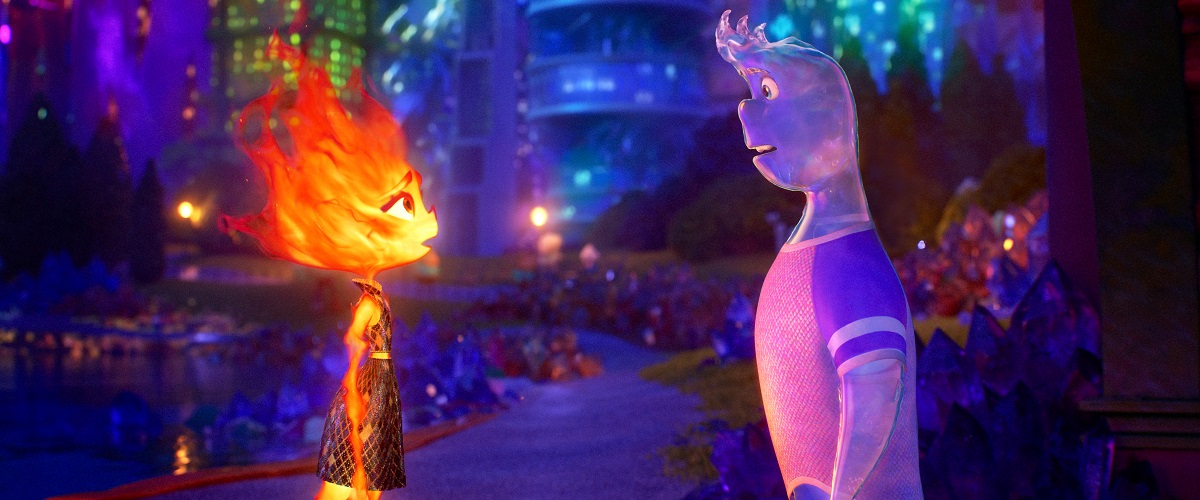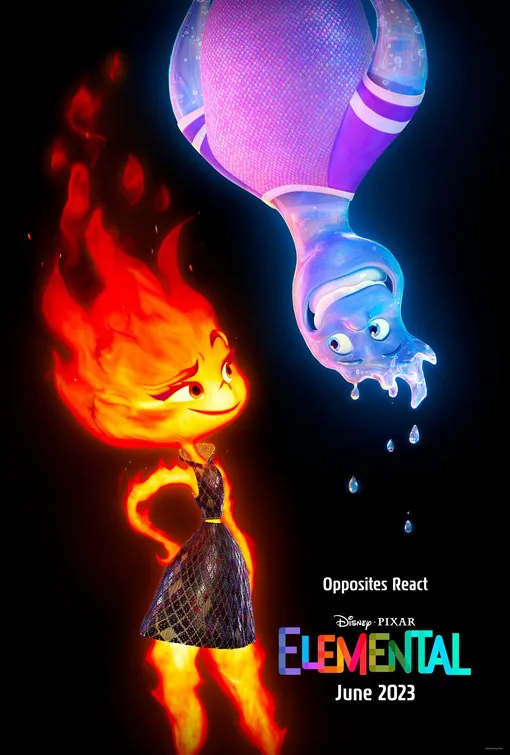At its best, Pixar is unbeatable, making clever, charming, and brightly original films to touch the heart and spark the imagination. And so it’s been dispiriting to see the animation studio behind such emotive triumphs as “Toy Story,” “Ratatouille,” “Up,” and “Inside Out”—among the best films of their respective years, bar none—recently fall short of its past standard of excellence.
It’s not just that modern-day Pixar has focused on reprising its greatest hits with a parade of sequels (“Toy Story 4,” “Incredibles 2,” “Lightyear”), or that the studio’s slate of recent originals (“Soul,” “Luca,” “Turning Red”) have all, oddly enough, centered on characters transforming into animals (a revealing trope for its prevalence in films about feeling different, whose initially diverse protagonists invariably spend most of the runtime covered in fur or scales). Also absent lately at Pixar, a subsidiary of Disney since 2006, is the mastery of execution that had distinguished the studio, a brilliance for establishing high-concept premises and effortlessly navigating their particulars.
“Elemental,” Disney and Pixar’s latest, feels emblematic of the studio’s struggle to recapture its original magic, making a mess of its world-building in service of a conventional story that fails the talent of the animators involved. Set in a world where natural elements—earth, fire, water, air—coexist in a New York-style metropolis, each representing different social classes, the film—directed by Peter Sohn, from a screenplay by John Hoberh, Kat Likkel, and Brenda Hsueh—aims high with that central metaphor but is set immediately off-balance by its unwieldiness as racial allegory, an issue compounded by haphazard pacing and writing so flatly predictable it suggests a Pixar film authored by an AI algorithm. At times bordering on the nonsensical, the film feels under-developed rather than universal, a colorful missed opportunity.
Presented as the closing-night selection of the 76th Cannes Film Festival, ahead of its stateside release in mid-June, “Elemental” envisions a densely populated urban sprawl similar to that of Disney’s anthrozoomorphic “Zootopia,” in which ideas of racial discrimination were uneasily reduced to “predator and prey” dynamics to allow for a story that focused more on dismantling personal prejudices than systemic racism. In Element City, a similarly ill-advised simplification is at work (though Sohn has explained that his Korean heritage and desire to make a film about assimilation fueled some of the creative decisions), and there’s even a similar eyebrow to raise with regard to the legitimate danger that these contrasting elements, like foxes to rabbits, pose to one another.
In “Elemental,” socially privileged water people flow back and forth through slickly designed high-rises and have no issue splashing down the city’s grand canals and monorails, which were designed for their gelatinous-blob bods, whereas fire folk are sequestered to Firetown, where their tight-knit community reflects East Asian, Middle Eastern, and European traditions—and accents run the gamut from Italian to Jamaican, Iranian, and West Indian, in a way that uncomfortably positions fire as representative as all immigrants and water as representative of the white upper-class. Earth and air, meanwhile, barely register; we see earth people who sprout daisies from their dirt-brown armpits, and cotton candy-esque cloud puffs playing “airball” in Cyclone Stadium, but the film is surprisingly non-committal in imagining the chemistry of inner-city elements interacting. Background sight gags abound, such as the “hot logs” that fire folk chow down on, but the actual ins and outs of Element City are explored only superficially, such as the revelation that all these elements take advantage of the same public transit. Replete with computer-generated inhabitants and generic modernist structures, its milieu feels more like concept art, to be further detailed at some point in the animation process, than a fully thought-through, lived-in environment.
“Elemental” centers on hot-tempered Ember Lumen (Leah Lewis, of “The Half of It”), a second-generation immigrant who works as an assistant in her father’s bodega shop. Fire people who emigrated from Fireland, from whence they brought spicy food and rigid cultural traditions of honor and lineage, Ember and her father Útrí dár ì Bùrdì (Ronnie del Carmen)—though he and his wife Fâsh ì Síddèr (Shila Ommi) had their names Anglicized to Bernie and Cinder at the “Elemental” equivalent of Ellis Island—have a close relationship as he readies her to take over the family business. Ember, though, is questioning whether or not she truly wants to inherit the store, as her beloved “ashfa” says he expects, or whether her gifts—such as the ability to heat a hot-air balloon and mold glass with her hands—might lead her in another direction.
Unable to control her emotions, which can take her from red-hot into a more ominous purple shade, Ember one day ruptures a pipe in her father’s shop, at which point city inspector Wade (Mamoudou Athie) gushes in. Wade’s been investigating the city’s dilapidated canal system, searching for the source of a leak that keeps flooding Ember’s basement but imperils all of Firetown. Determined to keep her father’s business from going under, Ember pursues and then quickly joins forces with Wade. As romance sparks between the two, they make for a particularly odd couple given one of the film’s less-than-convincing rules: that “elements don’t mix,” for reasons both practical and parochial, in Element City. Ember might extinguish Wade, while he could douse her flame, but their inevitably steamy romance is moreso forbidden because her father would never approve, setting up “Elemental” as an interracial love story, the kind Pixar hasn’t yet told with human characters.
From there, the film works like a checklist of Pixar storytelling clichés, its two opposites at first getting on one another’s last nerve but gradually forming a close bond, before separating over what amounts to a basic misunderstanding, which is resolved in climactic fashion as the two rescue one another from a looming threat and rekindle their love. Still, as the plot’s frantically paced chain reaction of events keeps Ember and Wade together, their relationship becomes the film’s slight but endearing center, a welcome respite from the mixed metaphors and misshapen conceptual mechanics that often threaten to break the story’s inner reality. (Why, for example, is what will happen if Ember and Wade touch such a mystery to them both, in a city whose ceramic and terracotta glass structures point to other elements interacting?)
Lewis voices Ember with a playful warmth that nicely complements the bubbling affability that Athie brings to Wade, while the animation of both their bodies—hers flickering then suddenly ablaze with emotion, heat wafting upward; his fluid and transparent, prone to collapsing into a puddle on the ground—is always exciting to look at, emphasizing malleability and dabbling in abstraction.
But even the film’s promising use of color, form, and movement feels hemmed in by the unimaginative storytelling. Only a few standout sequences—a visit to an underwater garden of Vivisteria flowers, a detour into hand-drawn animation that tells a love story in minimal, swirling lines—separate “Elemental” from any other Pixar film in which the characters are phosphorescent little blobs traveling through realistically animated cityscapes, and as rapidly as the film progresses it never goes anywhere unexpected.
There’s similarly nothing in “Elemental” to recall the wondrous aesthetic imagination of modern Pixar classics like “Finding Nemo” and “Wall-E,” with the exception of a rich score by composer Thomas Newman that takes its cues from a potpourri of global musical traditions and presents a more fully formed vision of cross-cultural exchange than the film’s muddled depiction of immigrant communities. Perhaps fittingly for a film that would have more accurately been titled “When Fire Met Water…,” “Elemental” is combustible enough from minute to minute, but it evaporates from memory the second you leave the theater.
This review was filed from the 2023 Cannes Film Festival. “Elemental” is now playing in theaters.




















